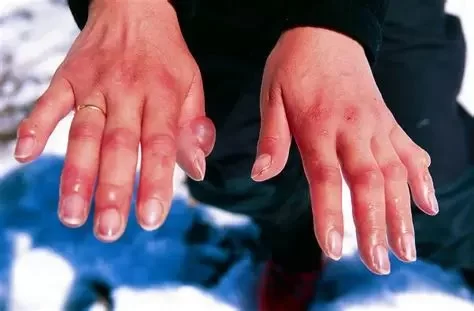- 1 - Understanding Frostbite on Hands and Feet - Causes-Symptoms
- 2 - Immediate Steps for Safety - First-Aid-Relief
- 3 - Long-Term Treatment and Recovery - Medical-Care-Therapies
- 4 - Real-Life Cases of Frostbite - Lessons-Learned
- 5 - Preventing Frostbite in Cold Climates - Practical-Advice
- 6 - How Pine Cliff Resort Supports Guest Safety - Resources-Guidance
1. Understanding Frostbite on Hands and Feet
How to deal with frostbite on hands and feet starts with knowing what frostbite actually is. Frostbite occurs when skin and underlying tissues freeze due to exposure to extremely cold temperatures. Hands and feet are particularly vulnerable because they are farther from the body’s core and lose heat more quickly. Symptoms often begin with numbness, tingling, or a pins-and-needles sensation, followed by discoloration and stiffened skin. Recognizing these early signs is the first step toward protecting yourself from serious tissue damage.
2. Immediate Steps for Safety
2.1 Gentle rewarming
As soon as frostbite is suspected, move to a warm indoor environment. Place hands and feet in warm (not hot) water, ideally around 100–104°F, for 15 to 30 minutes. This helps restore blood flow without causing burns.
2.2 Avoid direct heat
Do not use heating pads, stoves, or fireplaces to rewarm frostbitten areas. Because the skin is numb, direct heat can cause burns before you even realize it.
2.3 Remove wet clothing
Moisture accelerates heat loss. Replace damp socks or gloves with dry, insulated alternatives. Keep the affected limbs elevated to reduce swelling as circulation returns.
3. Long-Term Treatment and Recovery
3.1 Medical care
Severe frostbite often requires professional treatment. Doctors may use medications to improve circulation or, in extreme cases, perform surgery to remove damaged tissue. Early medical attention prevents long-term complications such as chronic pain or joint stiffness.
3.2 Natural recovery support
Some people incorporate gentle massage with natural oils, warm compresses, and hydration therapy as part of recovery. These methods should always be guided by professional advice but can help improve comfort during the healing process.
3.3 Psychological support
Frostbite recovery can be emotionally draining. Counseling and support groups can help individuals cope with anxiety about returning to cold environments.
4. Real-Life Cases of Frostbite
In 2021, hikers in Colorado were caught in a sudden snowstorm. Several reported frostbite on their hands and feet after being stranded for hours. Quick first-aid—warming hands in tepid water and seeking hospital care immediately—saved them from permanent damage. Another story involves a skier who ignored early tingling in her toes. By the time she sought help, severe frostbite had set in, leading to partial tissue loss. These real-world examples highlight why swift action matters.
5. Preventing Frostbite in Cold Climates
5.1 Proper clothing choices
Layered clothing with insulated gloves, moisture-wicking socks, and waterproof boots is essential. Make sure footwear isn’t too tight, as restricted circulation worsens frostbite risk.
5.2 Awareness of exposure time
Limit time outdoors in extreme cold, especially if temperatures are below 0°F or if strong winds increase chill factors. Take breaks indoors to restore warmth before heading back outside.
5.3 Hydration and nutrition
A well-nourished body resists cold better. Stay hydrated and eat energy-rich snacks while outdoors. This helps maintain circulation to extremities like hands and feet.
6. How Pine Cliff Resort Supports Guest Safety
Pine Cliff Resort is dedicated to guest safety in cold weather environments. Guests are provided with tips on winter clothing, safe outdoor activity guidelines, and even emergency kits for unexpected snowstorms. By combining comfort with preparedness, the resort ensures that visitors enjoy winter adventures without unnecessary health risks. For those seeking both relaxation and reliable safety resources, Pine Cliff Resort offers a trusted solution.







